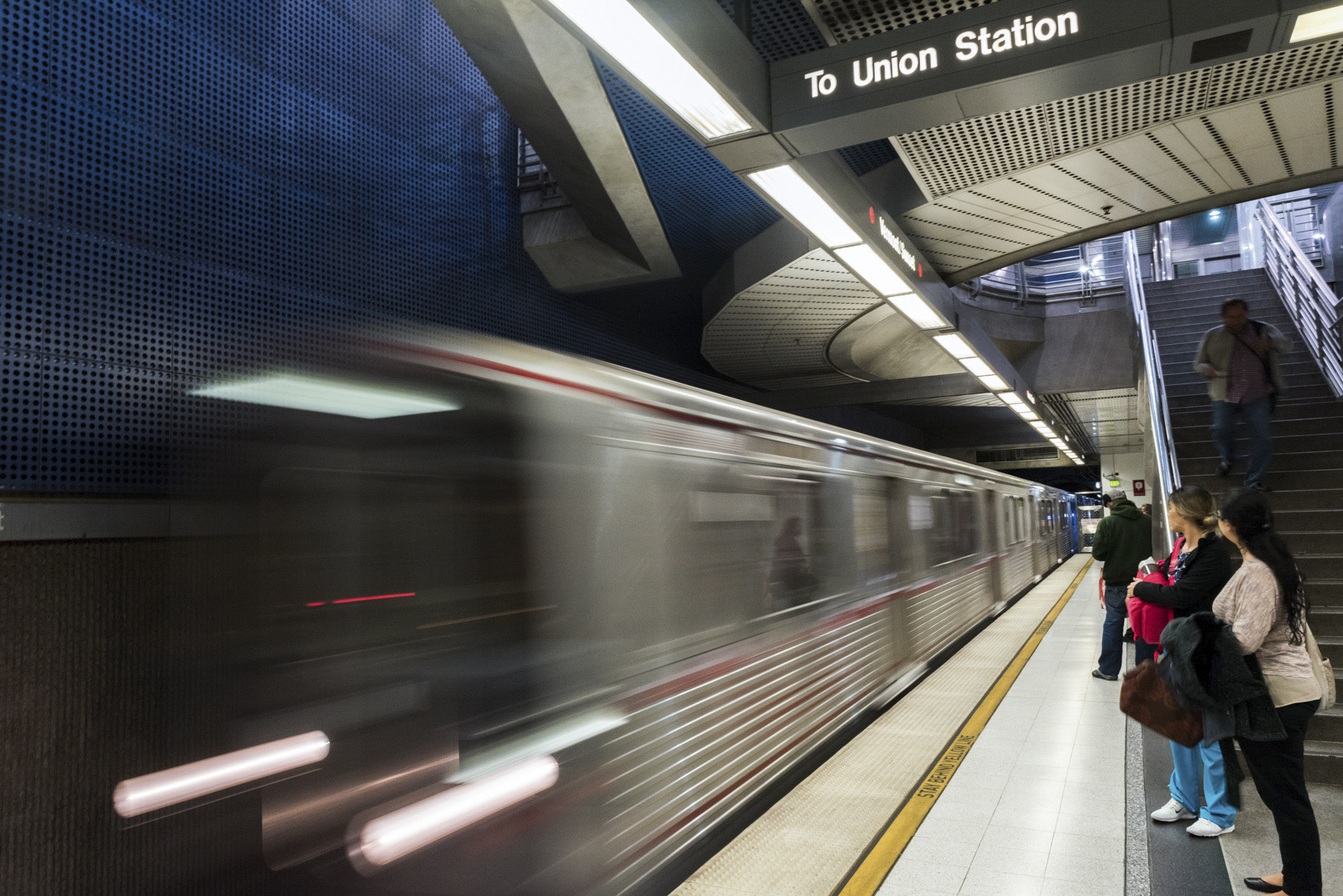Los Angeles must fix car culture by improving existing public transit systems

Transit systems in Los Angeles are severely ignored in favor of cars and highway traffic. The LA Metro should pour more resources into current systems rather than pursue new projects. (Daily Bruin file photo)
By Mark McGreal
Jan. 27, 2020 10:47 p.m.
Los Angeles is home to many things.
Beautiful beaches, Hollywood and, of course, the worst traffic known to man.
LA is a city built on freeways, meaning it’s so spread out that walking most places isn’t an option – and driving has proven to be the more desirable form of transportation. The number of LA Metro riders taking the bus has decreased rapidly in recent years as more Angelenos are putting their money away to buy cars.
The City of Los Angeles knows this and is trying to provide the upgrades citizens need. LA Metro’s Twenty-Eight by ‘28 Initiative is setting out to complete 28 transit projects before the 2028 Olympics – which will undoubtedly revolutionize the city’s transit system.
But that’s not the only major project in the works for LA.
LA Metro announced the Sepulveda Transit Corridor Project in 2018, which would connect the San Fernando Valley and the Westside of Los Angeles, potentially including a stop at UCLA. The first phase of the project is expected to be completed between 2033 and 2035.
Fifteen years seems like a long time to wait, especially when Metro riders spend most of their time doing just that.
While the STC Project addresses an area of need in Los Angeles public transportation, it is not solving this problem in a timely manner, and the resources being put toward the undertaking could be better utilized in more contemporary projects. The current LA subway system is by no means perfect, and LA Metro would do more good for the community by pouring these funds into fixing the existing problems.
Public transportation between the Valley and the City of Los Angeles is important, surely. LA Metro estimates that over 400,000 commuters use the Sepulveda Pass to commute to work every day.
But the STC Project is going to take over a decade to complete and will cost between $9 billion and $13 billion, said Dave Sotero, an LA Metro spokesperson.
“Finding an effective alternative for people who must drive has always been our biggest challenge,” Sotero said.
LA Metro is right that people choosing to drive rather than use public transit is the organization’s biggest challenge. More than 4.5 million people in Los Angeles commute to work every day. Of those commuters, almost 75% drive alone while just 5.7% use public transit.
And even if LA Metro can get people to make the switch, it is still tight on funding.
This month, LA Metro selected five companies to bid on the project. In doing so, the Metro hopes to secure additional private funding on top of the $9.5 billion it will be taking from sales tax revenue. And with LA Metro reaching for private partners, it feels like an all-in move on the city’s part – with a result that will ultimately miss the mark.
Opening another commuter line isn’t going to fix existing infrastructure. It’s not a lack of public transportation options that is driving people away from public transit – it’s the unreliability of the options themselves.
“Transit works best when it has a time advantage against driving,” said Jacob Wasserman, a research project manager at the UCLA Institute of Transportation Studies. “Unfortunately, much of the United States doesn’t have public transit which is comparable to driving.”
Wasserman has a point – when taking public transit was as fast as driving, citizens took the public transit 13% of the time. But when driving was faster, that number fell quickly.
“If you leave at the wrong time, public transportation can consume huge amounts of your day,” said Nick Vinan, a third-year philosophy student.
LA’s public transportation is ranked 14th best in the country, and its safety and reliability ranking sits at 15th in the nation, behind cities like Madison, Wisconsin, and Reno, Nevada.
But in a city like Los Angeles, a near-perfect public transit system is needed to convince citizens not to drive everywhere.
In order to make the transit system more dependable, the city needs to improve existing metro infrastructure. Extending the Purple Line is a start – but to fix the traffic problem, each LA Metro rail needs to be made longer in order to reach every part of Los Angeles.
“Once I started using public transportation, way more of Los Angeles opened up to me, even though the system doesn’t always run on time,” said Alex Modiano, a fourth-year English student.
Arguably, the STC Project is seeking to do just that. The line would connect the Valley and the city for the first time, giving people who need to commute every day a much-needed alternative to driving. And for UCLA students, a new stop could mean more feasible commuter options.
But pouring billions of dollars into new projects seems futile when considering the ineffectual but existing options. UCLA is surrounded by a complex network of public transportation – and if the city committed to making those options more effective and accessible to students, it wouldn’t need to spend taxpayer money on frivolous infrastructure.
Public transportation is an important part of any city. Good public transport helps commuters get to work, see more sights and cuts down on carbon emissions.
LA’s system isn’t doing any of these things effectively.
But building new railways commuters won’t use certainly isn’t the answer.


